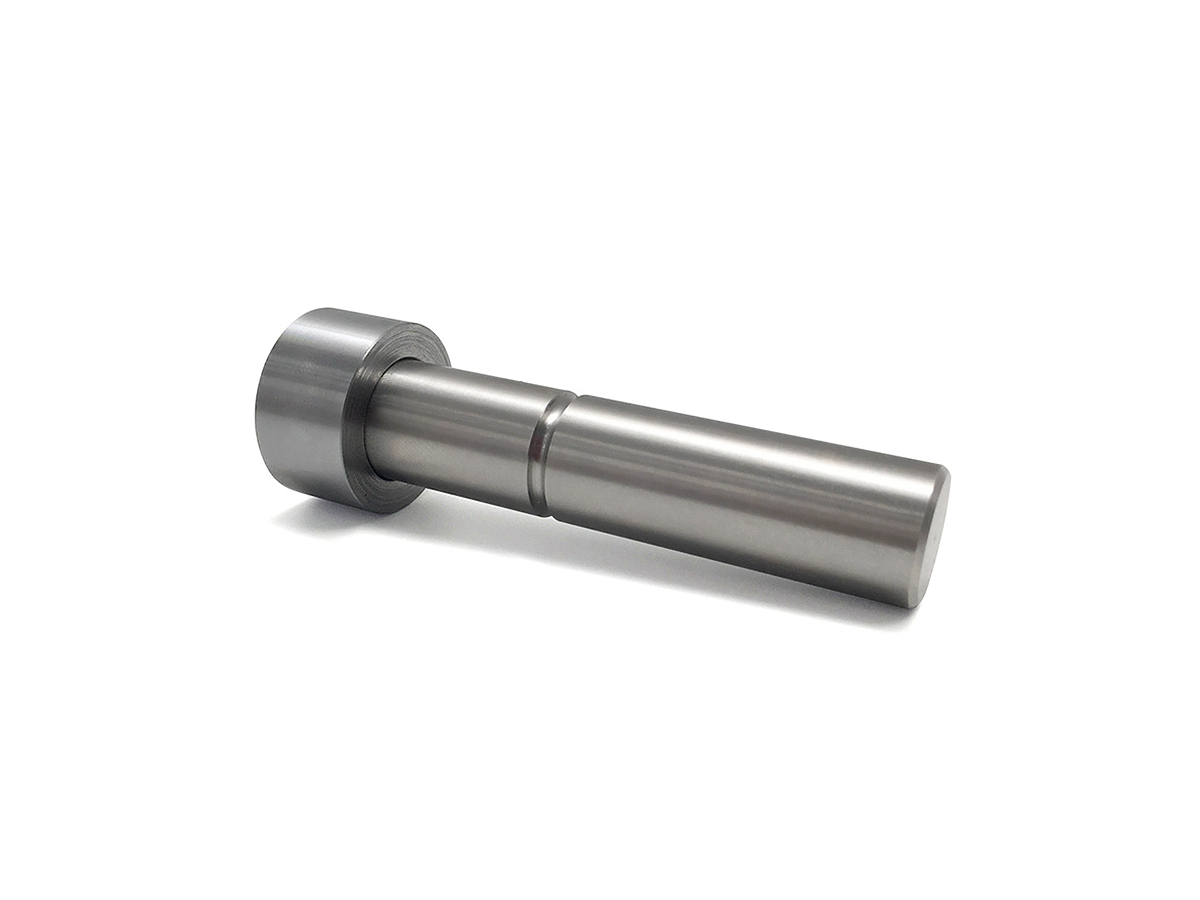The Future of Titanium CNC Machining in Oil and Gas: Applications for High-Performance Materials
Introduction
The oil and gas industry continually faces challenging operational conditions, including extreme pressures, corrosive environments, and demanding temperatures. High-performance titanium alloys, notably Ti-6Al-4V, Ti-6Al-2Sn-4Zr-6Mo (Grade 7), and Ti-3Al-8V-6Cr-4Mo-4Zr (Beta C), provide superior corrosion resistance, impressive strength-to-weight ratios, and exceptional durability, making them ideal for drilling equipment, subsea components, valves, and structural hardware.
Utilizing advanced CNC machining techniques, precision titanium components can be accurately manufactured to meet the stringent standards of the oil and gas sector. CNC machining ensures complex geometries, tight dimensional accuracy, and excellent surface finishes, significantly enhancing critical oil and gas infrastructure's performance, safety, and reliability.
Titanium Alloys for Oil and Gas Applications
Material Performance Comparison
Material | Tensile Strength (MPa) | Yield Strength (MPa) | Corrosion Resistance | Typical Applications | Advantage |
|---|---|---|---|---|---|
950-1100 | 880-950 | Excellent (≥1000 hrs ASTM B117) | Drilling equipment, valves | High strength-to-weight, excellent corrosion resistance | |
1150-1250 | 1080-1180 | Superior (>1200 hrs ASTM B117) | Subsea hardware, offshore connectors | Outstanding corrosion resistance, high tensile strength | |
1170-1300 | 1100-1200 | Exceptional (>1300 hrs ASTM B117) | High-pressure fittings, critical subsea parts | Exceptional strength, superior fatigue resistance | |
620-780 | 483-655 | Excellent (≥1000 hrs ASTM B117) | Tubing, flowlines | Good formability, strong corrosion resistance |
Material Selection Strategy
Selecting suitable titanium alloys for oil and gas applications involves careful consideration of corrosion resistance, strength, and environmental conditions:
Drilling equipment, high-pressure valves, and structural hardware demanding excellent strength (up to 1100 MPa tensile strength) and reliable corrosion resistance benefit significantly from Ti-6Al-4V (Grade 5), enhancing durability and service life.
Subsea hardware, offshore connectors, and fittings subjected to severe corrosion environments and pressures require superior corrosion resistance (>1200 hrs ASTM B117) and high tensile strength (up to 1250 MPa), making Ti-6Al-2Sn-4Zr-6Mo (Grade 7) ideal.
Critical high-pressure fittings and subsea components needing exceptional strength (up to 1300 MPa tensile strength) and superior fatigue resistance utilize Ti-3Al-8V-6Cr-4Mo-4Zr (Beta C), ensuring operational safety under extreme conditions.
Flowlines and precision tubing that require good formability, moderate strength (up to 780 MPa tensile strength), and excellent corrosion protection select Ti-3Al-2.5V (Grade 12), optimizing operational efficiency and reliability.
CNC Machining Processes
Process Performance Comparison
CNC Machining Technology | Dimensional Accuracy (mm) | Surface Roughness (Ra μm) | Typical Applications | Key Advantages |
|---|---|---|---|---|
±0.02 | 1.6-3.2 | Structural brackets, basic components | Economical, reliable production | |
±0.015 | 0.8-1.6 | Valves, rotational fittings | Improved accuracy, fewer setups | |
±0.005 | 0.4-0.8 | Complex subsea parts, precision valves | Superior dimensional accuracy, excellent finishes | |
±0.003-0.01 | 0.2-0.6 | High-precision connectors, micro-components | Maximum accuracy, intricate geometries |
Process Selection Strategy
Selecting CNC machining processes for oil and gas titanium components depends on complexity, precision, and performance requirements:
Basic structural components, brackets, and simple hardware requiring moderate precision (±0.02 mm) benefit from 3 Axis CNC Milling, ensuring economical and reliable manufacturing.
Rotational components, valve bodies, and moderately complex fittings needing enhanced precision (±0.015 mm) utilize 4 Axis CNC Milling to minimize setups and increase dimensional accuracy.
Complex subsea components, precision valves, and critical high-performance parts requiring tight tolerances (±0.005 mm) and superior surface finishes (Ra ≤0.8 μm) significantly benefit from 5 Axis CNC Milling, optimizing performance in harsh conditions.
Critical micro-components, precision connectors, and highly complex parts demanding extreme accuracy (±0.003 mm) and complex geometries rely on Precision Multi-Axis CNC Machining, ensuring maximum reliability and safety.
Surface Treatment
Surface Treatment Performance
Treatment Method | Corrosion Resistance | Wear Resistance | Max Operating Temp (°C) | Typical Applications | Key Features |
|---|---|---|---|---|---|
Excellent (≥800 hrs ASTM B117) | Moderate-High | Up to 400 | Valves, structural components | Durable corrosion protection, enhanced aesthetics | |
Exceptional (>1000 hrs ASTM B117) | High (HV1000-1200) | Up to 1150 | Drilling equipment, turbine components | Superior thermal protection, increased lifespan | |
Outstanding (>1000 hrs ASTM B117) | Very High (HV1500-2500) | Up to 600 | High-wear parts, subsea connectors | Extreme hardness, friction reduction | |
Excellent (≥1000 hrs ASTM B117) | Moderate | Up to 400 | Fittings, flowlines | Corrosion-resistant surface, contaminant removal |
Surface Treatment Selection
Surface treatment choices for oil and gas titanium components focus on corrosion resistance, wear reduction, and thermal management:
Structural components and valves requiring enhanced corrosion resistance and durable protection utilize Anodizing to prolong life and performance.
Drilling equipment and high-temperature turbine components benefiting from excellent thermal insulation and superior durability use Thermal Barrier Coatings (TBC).
Components experiencing significant friction and wear, such as subsea connectors, prefer PVD Coatings to improve lifespan due to high hardness and friction reduction.
Fittings and flowlines needing consistent corrosion protection and surface purity rely on Passivation, enhancing operational reliability.
Quality Control
Quality Control Procedures
Dimensional verification via Coordinate Measuring Machines (CMM) and optical comparators.
Surface roughness assessment with precision profilometers.
Mechanical property testing (tensile, yield, fatigue) per ASTM standards.
Corrosion resistance tests per ASTM B117 (Salt Spray Test).
Non-destructive testing (NDT), including ultrasonic and radiographic methods.
Comprehensive documentation adhering to ISO 9001, API Q1, and industry-specific oil and gas standards.
Industry Applications
Titanium Oil and Gas Component Applications
High-pressure valves and drilling components.
Subsea connectors and offshore structural parts.
Flowlines, tubing, and corrosion-resistant fittings.
Precision hardware for critical oilfield equipment.
Related FAQs:
Why is titanium ideal for oil and gas equipment?
How does CNC machining enhance component reliability in oil and gas?
Which titanium alloys are best for subsea applications?
What surface treatments optimize titanium performance?
What quality standards govern titanium machining in oil and gas?

